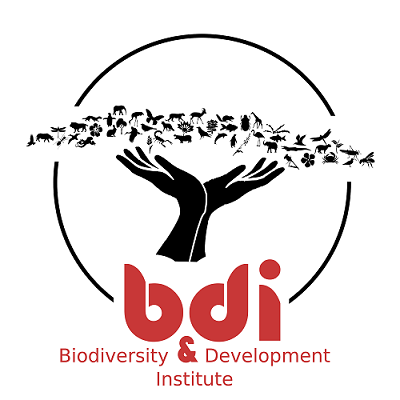Cover image of Tractrac Chat by Gregg Darling – Spitzkoppe, Namibia – BirdPix No. 13744
Identification
The Tractrac Chat is a small, pale coloured species with an upright stance and longish legs. Appears long-billed and short-tailed in the field. The bill, legs and feet are black and the sexes are alike.
It is a somewhat variable species with five recognised races across its range. Birds from Namibia are very pale and can appear almost pure white, while birds from the south of its range in the Karoo are typically darker with browner, more buffy plumage.

Carnarvon district, Northern Cape
Photographs by Sybrand Venter and Ryan Tippett (inset)
The upperparts vary in colour from almost white (Namib) through pale grey-brown to sandy-brown (central Karoo). The ear coverts are slightly darker than the rest of the upperparts. The flight feathers in the folded wings have pale whitish to buff edges. Underparts are mostly whitish but may be grey-white with sandy-buff flanks in the central Karoo. By far the most important distinguishing feature is the colouration and patterning of the rump and tail. The Tractrac Chat has a white to off-white rump and tail base with a broad, black wedge-shaped marking on the lower tail. This is diagnostic and most easily observed in flight.
Juveniles resemble the adults but are spotted with buff above and have dusky mottling below.

Near Swakopmund, Namibia
Photo by Gerald Wingate
In South Africa the Tractrac Chat is most easily mistaken for the Sickle-winged Chat (Emarginata sinuata). The two can bear a close resemblance, especially from distance. They are best told apart by the colouration of the rump and upper tail which are white or off-white in the Tractrac Chat and pale rufous in the Sickle-winged Chat. Both species show a black triangle or wedge-shaped marking on the lower tail.
The near-white Namibian birds are most likely to be confused with the Karoo Chat (Emarginata schlegelli) but that species has a longer tail and all-black central tail feathers (Note that Karoo Chats in Namibia are also markedly paler than their South African counterparts and have cream-white to buff rumps).

Carnarvon district, Northern Cape
Photo by Ryan Tippett
Status and Distribution
The Tractrac Chat is a common resident. It is, however, known to be locally nomadic due to unpredictable rainfall in the arid regions it inhabits.
It is near-endemic to Southern Africa, ranging from south-western Angola through western and southern Namibia to the central Karoo in South Africa where it is most widespread. The Tractrac Chat’s major population concentration is centred on Bushmanland in the Northern Cape province. There is a distinct, narrow extension of its range in the south-west that follows the arid corridor of the Tanqua Karoo.
The Tractrac Chat is not threatened, but influenced by land use as it is rare in heavily grazed Karoo shrublands.

Details for map interpretation can be found here.
Habitat

Near Carnarvon, Northern Cape
Photo by Ryan Tippett
The Tractrac Chat inhabits arid areas with flat, open plains and sparse scrub, low bushes and plenty of bare ground. Favoured habitats include gravel plains, sandy flats, sparse stony grassland, dry dwarf shrublands and low dunes with scant vegetation. It is not generally found in broken terrain. It is often the most conspicuous bird species in such desolate habitats.
Normally avoids human habitation in South Africa but may associate with buildings in the true desert regions of Namibia.

Near Eksteensfontein, Northern Cape
Photo by Johan and Estelle van Rooyen
Behaviour
The Tractrac Chat is usually encountered singly or in pairs, and rarely in family groups. Perches on top of low bushes, stones or fence posts. It is known to defend its foraging and nesting area against rivals and also from Karoo Chats. It may occasionally flick its wings and raise the tail, but less deliberately than the Sickle-winged or Familiar chat (Oenanthe familiaris). Hovers briefly before dropping down to perch or ground when alarmed, otherwise tame and inquisitive.
Forages mainly on the ground, including on gravel roads, where it scavenges road-killed insects. Feeds primarily on insects and other invertebrates such as flies, beetles, termites, ants, plant hoppers, spiders and snails.

Carnarvon district, Northern Cape
Photo by Ryan Tippett
The Tractrac Chat is a monogamous and solitary nester. The nest is a neat, deep cup lined with fluffy seeds, and set on a foundation of dry twigs. Nests are placed on the ground under a shrub or againtst a stone or rock. The nest is not reused, but several old nests may be clustered within in the vicinity. Egg laying dates vary according to rainfall but is mainly during September and October. 2-3 eggs are laid per clutch and incubation is discontinuous and performed by both sexes. The duration of the incubation period is unrecorded. The newly hatched young are rufous coloured, with long, dark grey down on dark feather tracts. The fledging period lasts around 18 days.

Carnarvon district, Northern Cape
Photo by Sybrand Venter
Further Resources
Species text adapted from the first Southern African Bird Atlas Project (SABAP1), 1997.
The use of photographs by Gerald Wingate, Gregg Darling, Johan and Estelle van Rooyen and Sybrand Venter is acknowledged.
Virtual Museum (BirdPix > Search VM > By Scientific or Common Name).
Other common names: Woestynspekvreter (Afrikaans); Traquet tractrac (French); Namibschmätzer (German); Woestijn-spekvreter (Dutch); Chasco-pálido (Portuguese)
Recommended citation format: Tippett RM 2023. Tractrac Chat Emarginata tractrac. Biodiversity and Development Institute. Available online at http://thebdi.org/2023/06/12/tractrac-chat-emarginata-tractrac/
List of bird species in this format is available here.

